To date, hirsutism is one of most common dermatological pathologies and affects more than 5% of women of reproductive age. Hirsutism is determined by the presence in women of terminal hair on androgen-dependent zones, in contrast to hypertrichosis, which is characterized by an increase in the number of vellus or terminal hair in various areas of the skin.
The causes of hirsutism and hypertrichosis, as well as methods for diagnosing and treating these diseases are given in this article.
Hirsutism: types and causes of the disease, differential diagnosis
Today, it is customary to distinguish several varieties of hirsutism. Depending on the etiology, there are:
- family (constitutional) – hereditary;
- adrenal – due to hyperplasia of the cortex or tumors of the adrenal glands;
- ovarian – due to polycystic ovaries, tumors, etc.;
- pituitary – due to Cushing's syndrome, prolactin-synthesizing pituitary adenoma, etc.
The following forms of hirsutism are also distinguished:
- medicinal – occurs as a result of taking certain medications;
- idiopathic – when the cause of occurrence cannot be established;
- occurring against the background of CNS damage;
- occurring against the background of increased sensitivity of peripheral tissues to androgens.
The most common cause of hirsutism is polycystic ovaries.
Differential diagnosis of hirsutism depending on the level of androgens
The gold standard for diagnosing hirsutism is testosterone levels. If the testosterone level does not exceed the limit of the norm or exceeds it slightly, dermatological hirsutism should be suspected first of all.
If testosterone is up to two times the upper limit of normal, hirsutism may be due to:
- polycystic ovary syndrome;
- hyperplasia of the adrenal cortex;
- Cushing's syndrome.
If the testosterone level exceeds the upper limit of normal by more than two times, it is necessary to exclude the carcinogenic nature of the disease.
You may be interested in: "Skin changes during menopause"
In the diagnosis of hirsutism, it is important to determine the level of total and free testosterone.
It is also necessary to determine the level of dehydroepiandrosterone sulfate, dihydrotestosterone, which is responsible for androgenetic alopecia and hirsutism, the level of prolactin, as well as globulin that binds sex hormones.
When diagnosing and treating hirsutism, it is important to include consultation with related specialists – endocrinologist and endocrinologist-gynecologist.
After a diagnosis is made, an important step is the appointment of treatment. Adrenal hirsutism is treated with prednisolone and antiandrogen drugs. With ovarian – contraceptives or antiandrogens, and gonadotropin-releasing hormone.
Need to be done:
- differentiation of hirsutism and hypertrichosis;
- methods of effective aesthetic correction of hirsutism and hypertrichosis.
How is hypertrichosis different from hirsutism? Types and causes of hypertrichosis
Hypertrichosis is a pathology characterized by the appearance of hair on any part of the skin, and not only on androgen-dependent zones, as in hirsutism.
According to localization, generalized and localized hypertrichosis are distinguished, according to the duration of existence – congenital and acquired, and by type of hair – lanuginous and terminal.
The cause of the pathology can be various diseases and syndromes, as well as hereditary pathologies that are characterized by generalized hypertrichosis, and diseases associated with the presence of unwanted hair in certain anatomical areas.
Acquired hypertrichosis occurs in paraneoplastic syndrome – pathology observed in oncological processes. The colon, breast, and lungs are most commonly affected. In paraneoplastic syndrome, vellus hair grows over the entire skin, but sometimes there is also a local lesion of the facial skin.
Hypertrichosis is a pathology characterized by the appearance of hair on any part of the skin, and not just on androgen-dependent zones.
Acquired localized hypertrichosis occurs with the development of various diseases (for example, porphyria) or with prolonged mechanical stress.
Acquired drug-induced hypertrichosis develops with the use or use of various medications:
- antibiotics;
- glucocorticosteroids;
- psoralens and other drugs.
Differential diagnosis of hypertrichosis depending on the presented hair
In lanuginous hypertrichosis, it is necessary to differentiate between congenital and acquired pathology. In the latter case, the assessment of malignancy is very important. In the case of terminal hypertrichosis, it is also necessary to exclude the use or intake of drugs and various congenital pathologies.
After diagnosis and consultation with related specialists, treatment is prescribed.
Features of aesthetic correction of hirsutism and hypertrichosis
An important step is the aesthetic correction of hypertrichosis and hirsutism. For this purpose, hair removal, electrolysis and various laser technologies are used.
In the center of dermatology and cosmetology of Professor Svyatenko, the problem of hirsutism and hypertrichosis is solved by using diode laser hair removal, which is carried out with a LightSheer device manufactured by Lumenis. This method is today the gold standard in the aesthetic correction of the above diseases.
Machine specifications:
- wavelength 800 nm;
- melanin is the chromophore;
- built-in cooling system, which is represented by a sapphire head with a constant temperature of 4 degrees Celsius;
- the presence of a mode for working with dark skin;
- Pulse width adjustment.
Photo of the results of working with the LightSheer
- Patient with constitutional hirsutism before treatment and after 4 treatments of diode laser hair removal
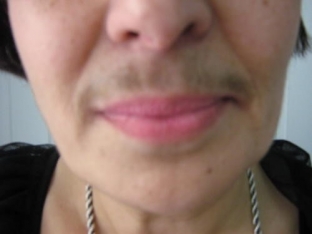
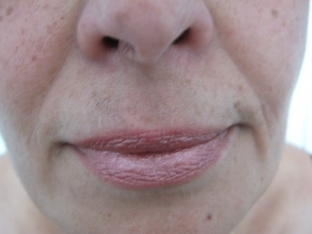
- Ovarian form of hirsutism – before and after 5 laser hair removal treatments
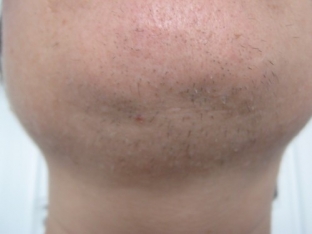
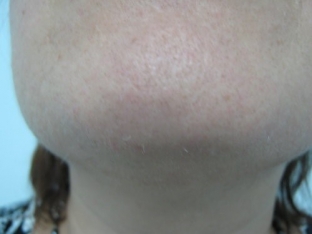
Presence of unwanted hair – one of the most frequent reasons for visiting both a dermatologist and an esthetician. To date, laser techniques have been successfully used to correct this aesthetic problem. Diode Laser - FDA approved and most effective in correcting hirsutism and hypertrichosis.
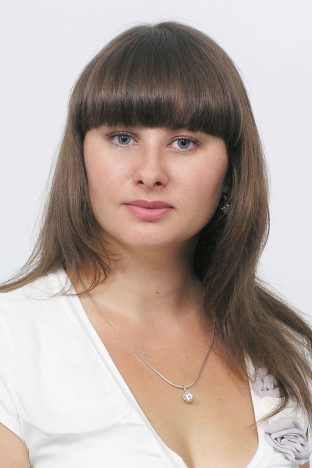 Based on the materials of the report presented at the conference "11th Kyiv Dermatological Days" Dr. Andriuc L.A. – dermatovenereologist, cosmetologist of the Center for Dermatology and Cosmetology of Professor Svyatenko (Dnipro).
Based on the materials of the report presented at the conference "11th Kyiv Dermatological Days" Dr. Andriuc L.A. – dermatovenereologist, cosmetologist of the Center for Dermatology and Cosmetology of Professor Svyatenko (Dnipro).
Read also material from the author:
"Crow's feet correction methods around the eyes"









Add a comment